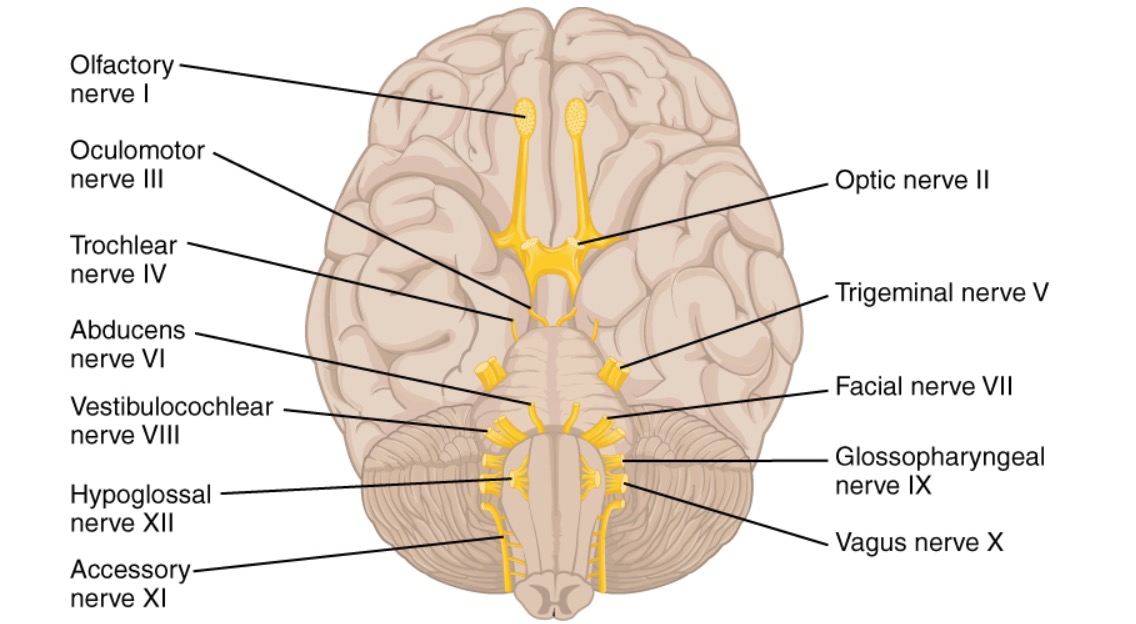Playlist
Show Playlist
Hide Playlist
Glossopharyngeal and Vagus Nerve Nuclei
-
Slides 6 BrainStem BrainAndNervousSystem.pdf
-
Reference List Anatomy.pdf
-
Download Lecture Overview
00:00 Now, I want you to understand some of the functions that are associated with these cranial nerve nuclei starting with the glossopharyngeal nerve nuclei. These are identified by the asterisk. So nucleus ambiguus is a part of this. Inferior salivatory nucleus is a part of the glossopharyngeal nerve nuclei as well as the solitary nucleus and its tract. First is the inferior salivatory nucleus shown right in through here. 00:36 This is going to send preganglionic parasympathetic fibers to the otic ganglion in the face. 00:45 They will synapse within this ganglion and then those postsynaptic fibers will be conveyed to the parotid gland to provide it secretomotor innervation. So the mnemonic here for this association of glossopharyngeal to otic ganglion to parotid gland is simply G-O-P or GOP. The function of the nucleus ambiguus, this provides the branchial motor output. This output will control the stylopharyngeus muscle causing it to contract. 01:26 This muscle is derived from the third pharyngeal arch. This is the nerve that innervates the third pharyngeal arch. 01:38 The last nucleus associated with the glossopharyngeal nerve nuclei is that of the solitary nucleus. 01:45 This is going to provide sensory input from the pharynx, the carotid sinus, as well as taste from the posterior one-third of the tongue. I also want you to understand the various functions of vagal nerve nuclei. 02:07 The dorsal motor nucleus is the visceral motor output of your vagus. The nucleus ambiguus, as it was in the glossopharyngeal nerve nucleus is branchial motor. In this case, it’s branchial motor to muscles that are derived from the fourth pharyngeal pouch. These would be skeletal muscles of the pharynx and the larynx. The solitary nucleus is going to provide for sensory input into the brainstem.
About the Lecture
The lecture Glossopharyngeal and Vagus Nerve Nuclei by Craig Canby, PhD is from the course Brain Stem.
Included Quiz Questions
The glossopharyngeal nerve provides branchial motor innervation to certain muscles. Muscles that receive this innervation are derived from which of the following?
- 3rd pharyngeal arch
- 4th bronchial cleft
- 2nd aortic arch
- 3rd pharyngeal pouch
- 1st pharyngeal arch
Muscles derived from the 4th pharyngeal arch receive vagal motor innervation from which of the following structures?
- Nucleus ambiguus
- Inferior salivatory nucleus
- Dorsal motor nucleus
- Superior salivatory nucleus
- Solitary nucleus
Customer reviews
5,0 of 5 stars
| 5 Stars |
|
1 |
| 4 Stars |
|
0 |
| 3 Stars |
|
0 |
| 2 Stars |
|
0 |
| 1 Star |
|
0 |
good cns lecture delivered in an understandable way. very helpful




